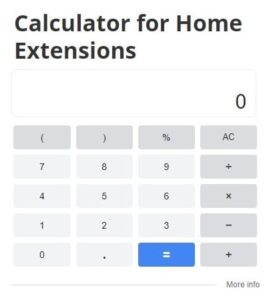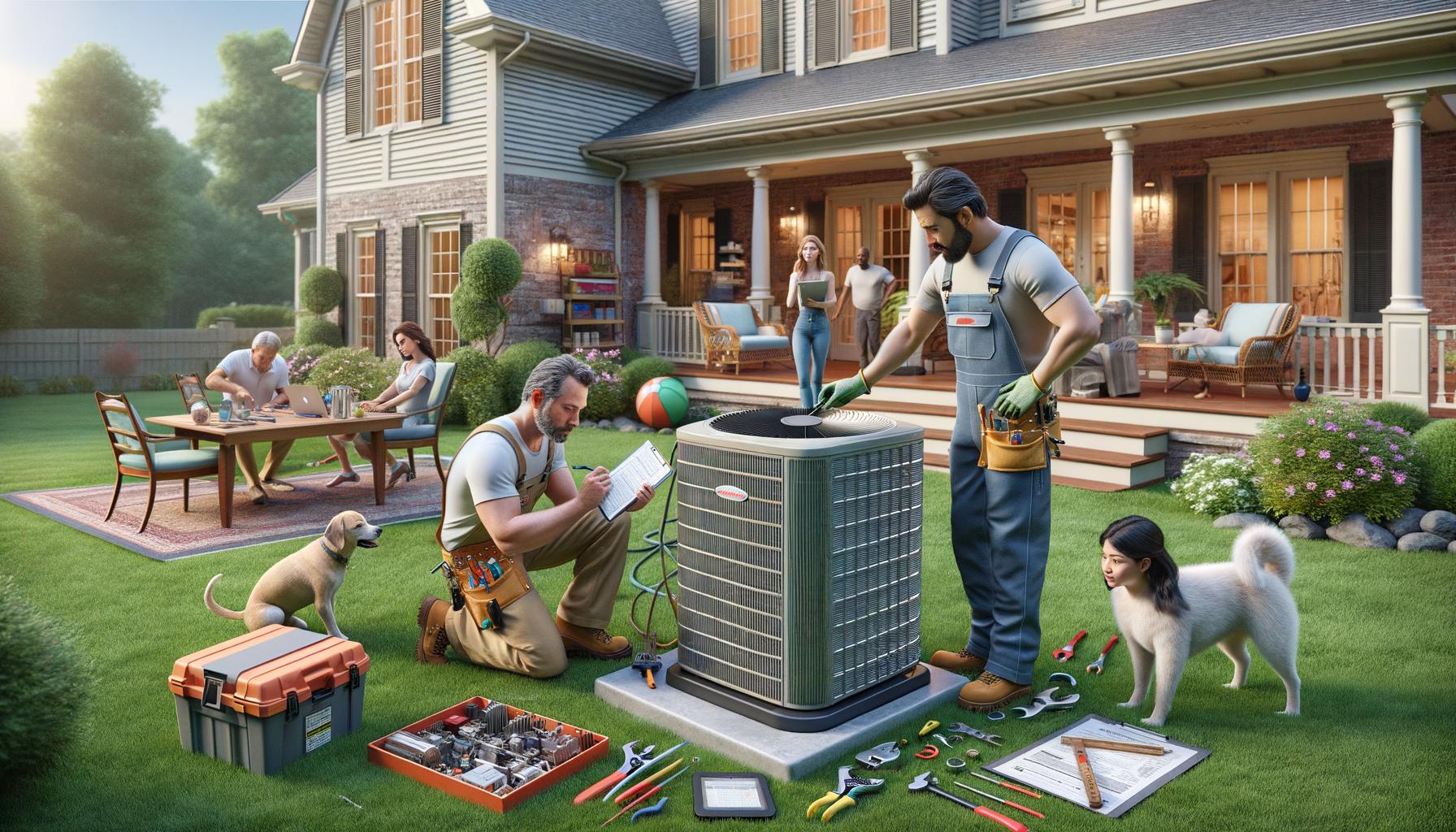
At Home Owners Association, we understand the importance of keeping your AC system in top shape. Regular home AC annual maintenance is key to ensuring your cooling system runs efficiently and lasts longer.
In this guide, we’ll walk you through the essential steps to perform AC maintenance yourself, saving you money and extending the life of your unit. Let’s dive into the process of preparing your AC for peak performance this summer.
Preparing Your AC for Annual Maintenance
Assembling Your Toolkit
To start your annual AC maintenance, you need to gather all necessary tools and materials. Your toolkit should include:
- Screwdriver
- Pliers
- Multimeter
- Fin comb
- Vacuum cleaner (with a soft brush attachment)
- Coil cleaner
- Spray bottle (filled with mild detergent and water)
- Microfiber cloths
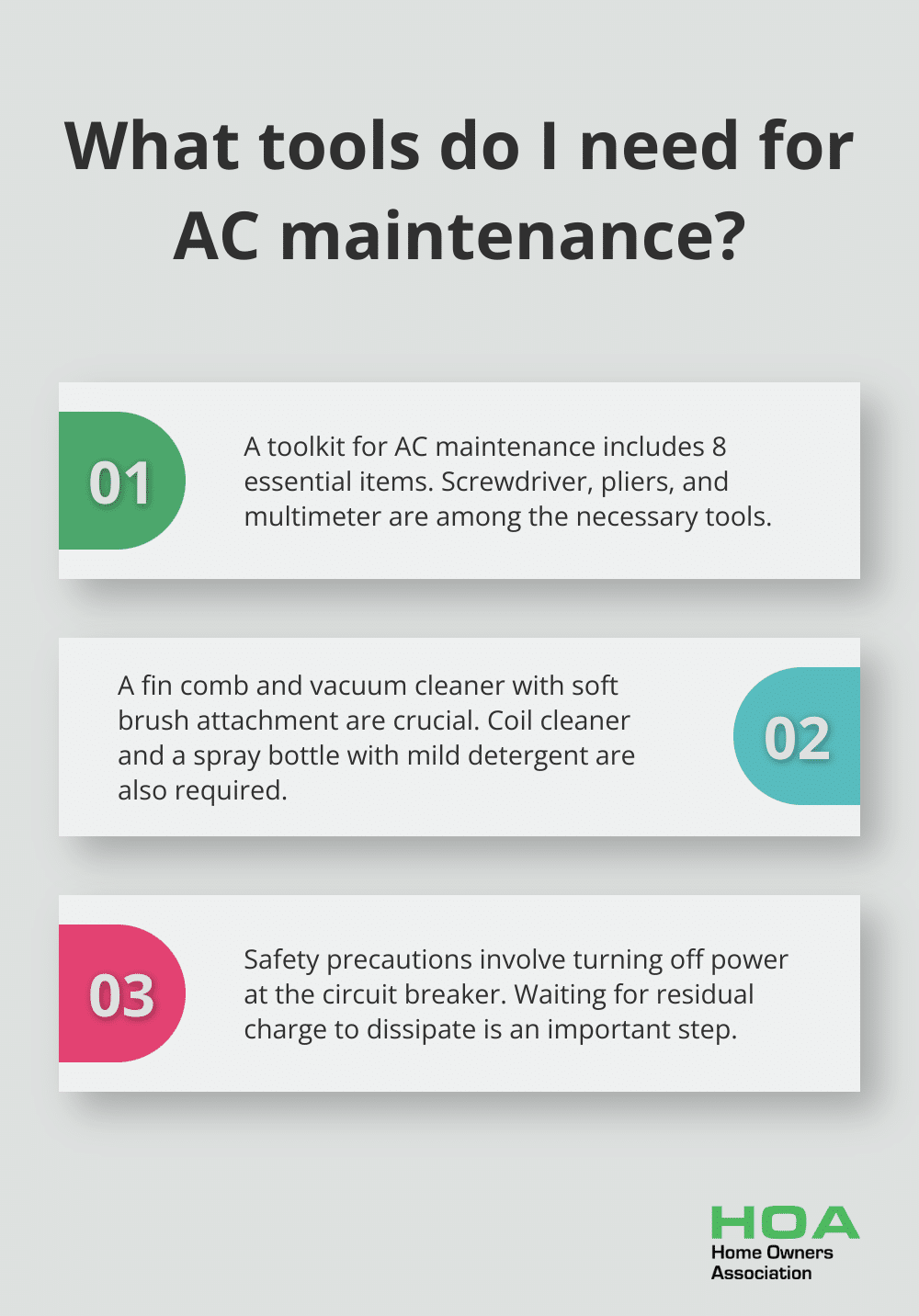
Having these items ready will streamline your maintenance process and increase efficiency.
Prioritizing Safety
Safety comes first when working with electrical appliances. Follow these steps:
- Locate your AC’s power source.
- Switch it off at the circuit breaker.
- Turn off the separate shut-off box near the outdoor unit (if applicable).
- Wait a few minutes for any residual charge to dissipate.
These precautions will eliminate the risk of electric shock during maintenance.
Preparing the Work Area
Create a clean workspace around your outdoor AC unit:
- Remove leaves, twigs, and debris within a two-foot radius of the unit.
- Trim back overhanging branches and encroaching vegetation.
- Use a garden hose to gently spray down the unit’s exterior (removing dirt and grime).
This clearance is essential for proper airflow and prevents debris from causing damage over time.
Knowing Your Limits
While many maintenance tasks are DIY-friendly, some require professional expertise. If you feel uncomfortable or unsure about any task, don’t hesitate to contact a professional. Home Owners Association can connect you with trusted HVAC specialists across Australia if you need expert assistance.
With your AC unit powered down and the area cleared, you’re now set to move on to the cleaning and inspection phase of your maintenance routine. This next step will involve a closer look at the internal components of your AC system, ensuring every part is clean and functioning optimally.
Tackling Key AC Components
Filters First
Start with the air filters, the frontline defense against dust and debris. Locate your filter (typically found in the return air duct or blower compartment). Clean washable filters thoroughly with warm, soapy water and let them dry completely before reinsertion. Replace disposable filters with new ones that match your AC’s specifications. If the filter looks dirty after a month, change it. At a minimum, change the filter every 3 months. A dirty filter will slow down air flow and make the system work harder.
Coil Care
Next, address the evaporator and condenser coils, vital components for heat exchange. For the indoor evaporator coil, use a soft brush to remove loose debris, then apply a foam cleaner designed for AC coils. Let it sit for a few minutes before rinsing with water. The outdoor condenser coil often accumulates more dirt. Spray it gently with a hose, directing water from the inside out to push debris away from the unit.
Drain Line Diligence
The condensate drain line is an essential part of a central air conditioning system, responsible for managing the moisture created during the cooling process. Find the drain line near your indoor unit and pour a cup of white vinegar through it to eliminate any algae or mold. Follow this with water to flush out remaining debris. If you notice slow drainage, use a wet/dry vacuum to clear stubborn clogs.
Professional Assistance
While these steps can significantly improve your AC’s performance, some issues require expert attention. If you encounter complex problems during your maintenance routine, contact a certified HVAC technician. (Home Owners Association members can access our network of trusted professionals across Australia for expert assistance when needed.)
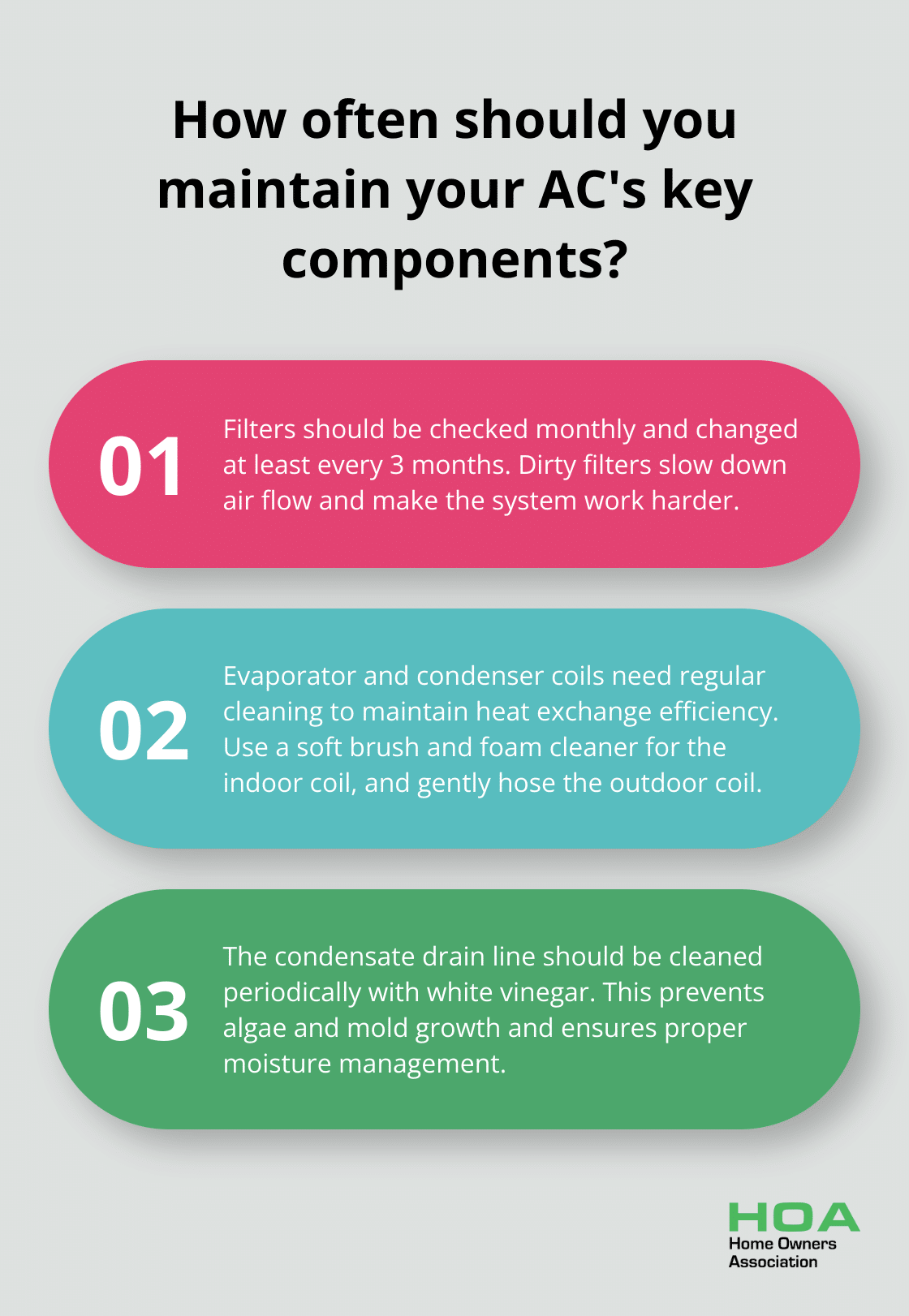
With your AC’s key components now clean and inspected, it’s time to move on to the next critical phase of maintenance: checking and optimizing your system’s performance. This step will ensure your AC operates at peak efficiency throughout the cooling season.
Optimizing AC Performance
Thermostat Calibration
Test your thermostat’s functionality. Set it to a temperature below the current room temperature and wait for your AC to start. If it doesn’t respond, you might have an issue with the thermostat or its connection to your AC unit. For more accurate temperature control, upgrade to a smart thermostat. These devices can save up to 15% on cooling costs (according to the U.S. Department of Energy).
Refrigerant Level Assessment
Low refrigerant levels can severely impact your AC’s cooling capacity and efficiency. When your AC unit is low on refrigerant, it has to work harder to cool your home, which can lead to higher electricity bills and breakdowns. If you suspect low refrigerant, call a certified technician, as handling refrigerants requires specialized training and equipment.
Lubricating Moving Parts
Proper lubrication of moving parts reduces friction and prevents wear. It also protects bearings against corrosion and acts as a seal to prevent entry of contaminants. Focus on the fan motor bearings and blower motor. Use a few drops of electrical motor oil on each oil port. Don’t over-lubricate, as this can attract dust and debris. If you’re unsure about which parts need lubrication or how to do it safely, consult your AC’s manual or contact a professional.
Electrical Connection Inspection
Loose electrical connections can lead to system failures and pose safety risks. Inspect visible wiring for signs of wear or damage. Tighten any loose connections you find, but be cautious – if you’re not comfortable working with electrical components, leave this task to a professional. Faulty wiring is a leading cause of electrical fires in homes (as reported by the Electrical Safety Foundation International).
Professional Assistance
Some issues require expert attention. If you encounter complex problems or feel unsure about any maintenance task, contact a certified HVAC technician. Home Owners Association members can access our network of trusted professionals across Australia for expert assistance when needed.
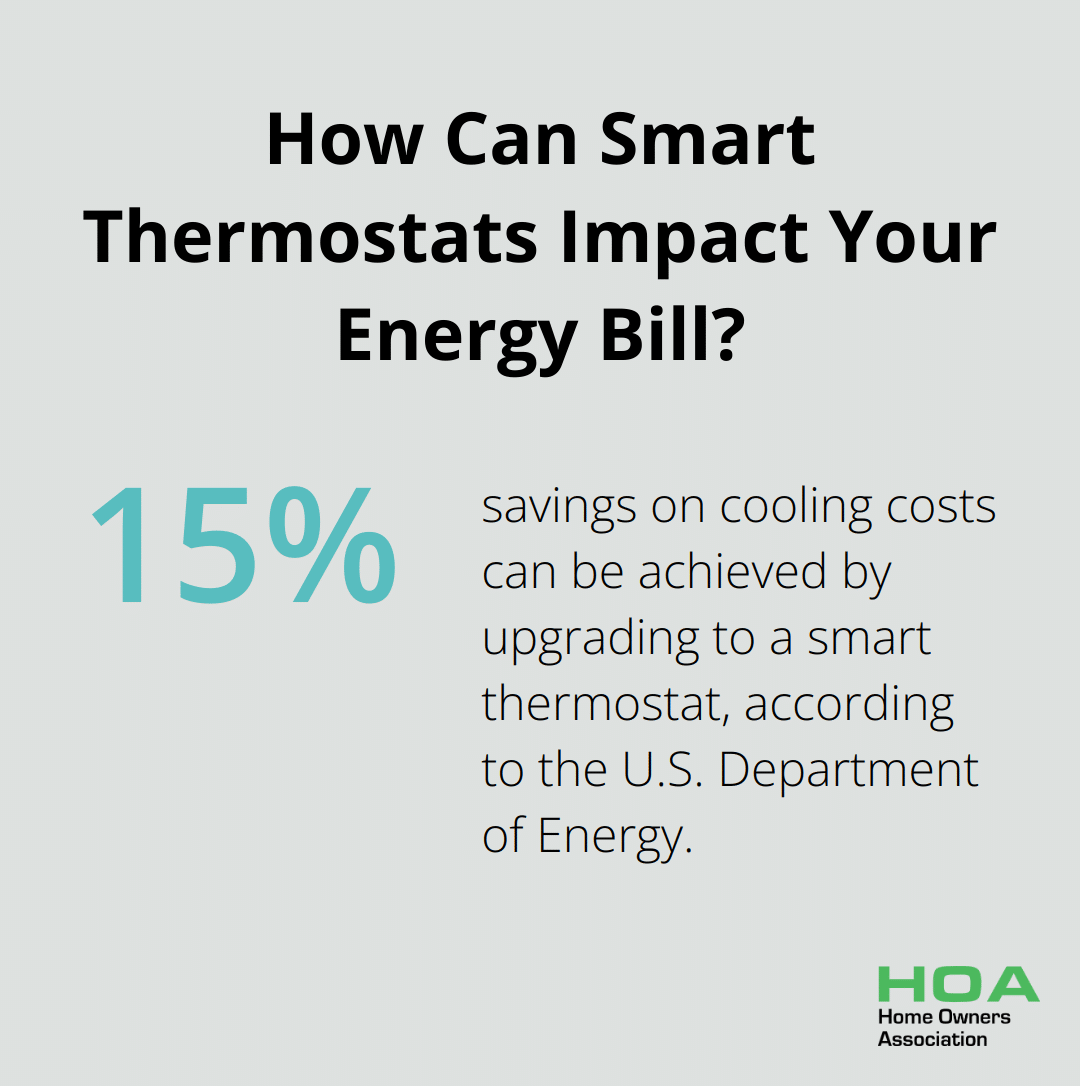
Final Thoughts
Home AC annual maintenance is essential for every homeowner. You can improve your AC’s efficiency, extend its lifespan, and reduce energy costs by following the steps in this guide. Regular maintenance leads to better indoor air quality, consistent cooling, and fewer unexpected breakdowns.
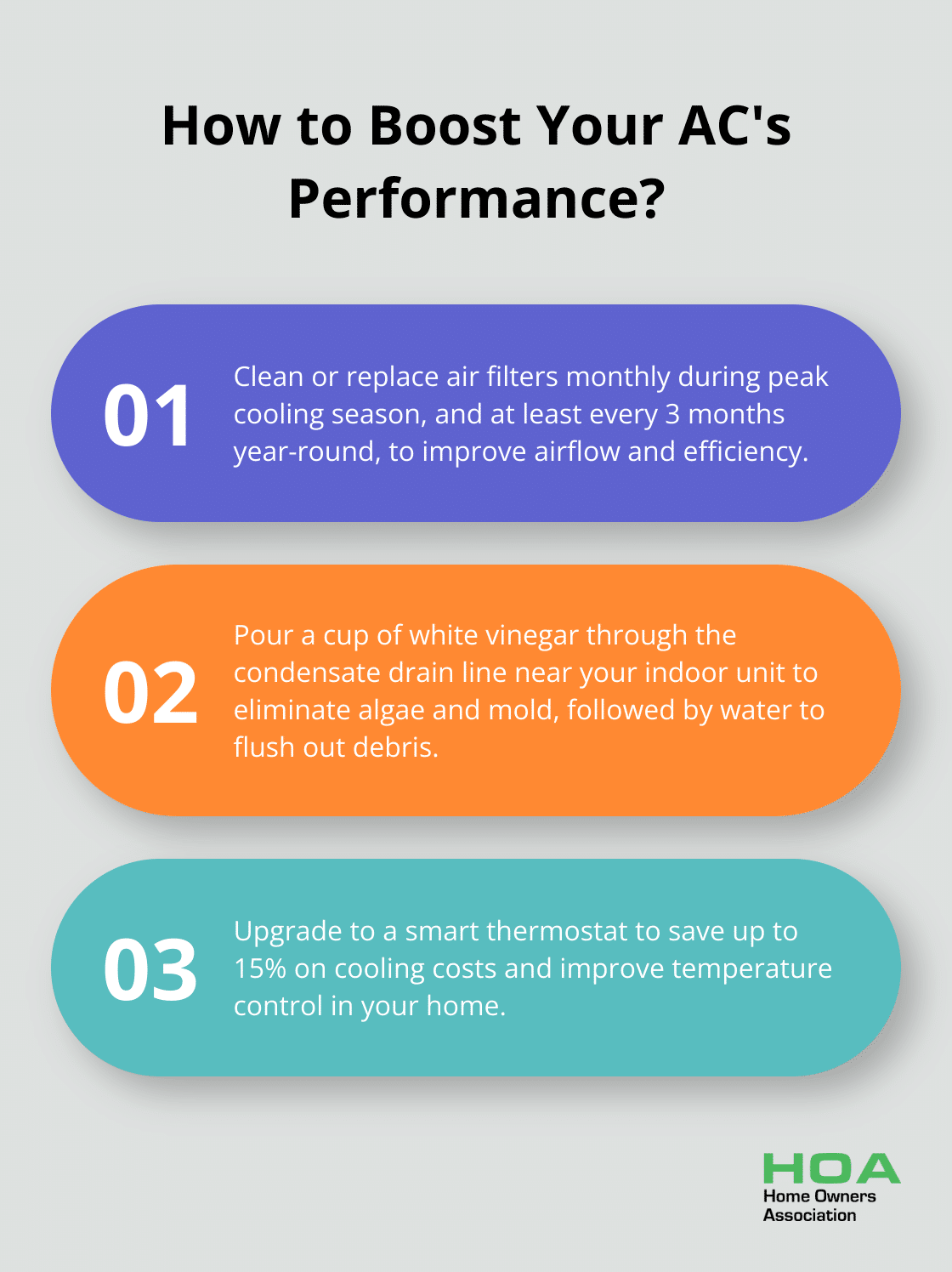
Many maintenance tasks can be performed by homeowners, but complex issues require professional help. If you encounter persistent problems or feel unsure about any maintenance task, seek assistance from a certified HVAC technician. Professional expertise ensures your AC system receives proper care and attention.
We at Home Owners Association are dedicated to helping Melbourne homeowners maintain their properties effectively. Our members can access trade pricing, expert advice, and a network of trusted professionals (when DIY isn’t enough). Stay proactive with your AC maintenance to keep your home cool and comfortable during hot Australian summers.





